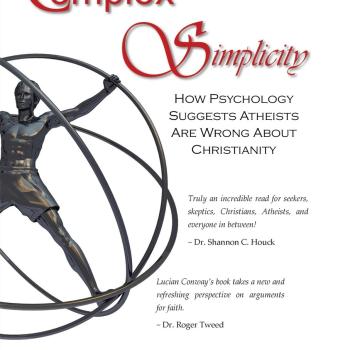
The Dawn of Deconversion Research and the Emergent Church
Despite the comparative lack of research on deconversion as a whole, work on this topic can be traced back as far as 2009 and Adam’s paper titled “Leaving the fold.” Prior to this, research related to deconversion was targeted at defectors from new religious movements rather than Christianity specifically (Streib & Keller, 2004; Cardano & Pannofino, 2018). At the time Adam wrote his paper, the word “deconversion” was not yet in vogue, and he used the term “apostacy.” In his paper Adam noted that while people from a variety of religious backgrounds were known to disaffiliate from religion, the people who left the church and adopted a distinctly anti-religious identity tended to come from Fundamentalist backgrounds. In Adam’s work, Fundamentalist religion was defined by the high levels of certainty it demanded of its adherents. Adam describes the fundamentalist adherent as believing in two options: the total certainty and security of his or her religious environment, or “a Nietzschean nihilistic void.” (Adam, 2009, p. 43).
The description Adam gives of a fear of stepping out into the “void” of apostacy is reflected in the more recent work of Łysiak et al. (2020) in which the authors describe the risk/reward decision youth have to make as they consider leaving the church. On the one hand, an exit from the church would bring peer approval, but on the other, leaving their religious environment puts them at risk of “transcendental emptiness” (Lysiak et al., 2020, p. 15).
An unintentional prequel to Adam’s work is the work done by Harrold (2006) and later a sequel by Bielo (2012). Both researchers investigated the phenomena of the “emergent church” (EC). According to Bielo (2012), the EC’s origins can be traced back to 1995 when an evangelical institution known as the Leadership Network launched a project titled the Young Leaders Network (YLN).
The demographics which composed the YLN reflected Evangelicalism as a whole in America at the time: white, middle-class, Gen-X, urban individuals involved in church leadership and outreach. Because this was 1995 and the leaders were Generation X – in their 20s at the time – they extended the YLN into the digital world, taking advantage of online forums and informal networks.
According to Bielo, YLN operated off three major principles:
- Criticism of the conservative evangelical church, which included the Right-Wing politics, theology, worship, evangelism, and capitalist/consumer economics associated with evangelicalism.
- Addressing the culture gap between Gen-X and Millennials, including an update to the outmoded assumptions of 20th century Evangelicalism
- An embrace of Postmodernism – meaning that people are unable to know absolute truth with absolute certainty (Bielo, 2012).
It became the creed of the YLN that a new church should “emerge” from the shell of the former church in order to put these three principles into practice (Bielo, 2012).
Harrold (2006) interacted with emergent church members and participated in their gatherings and services. What Harrold noted in his research is that the “testimony” time – a period in which church members would traditionally present a narrative of life experiences which had been meaningful to their religious journey – sounded distinctly different in the EC community. Instead of speaking of how God worked in their lives, or similar religious narratives, EC members would speak of the problems they had with their evangelical communities, the stress of exiting those communities, and the peace of no longer having to associate with those communities (Harrold, 2006). Additionally, EC services consisted not so much of teaching about the Bible or God, but rather by talking about the struggles and doubts of traditional Evangelicalism. Doubt was sanctified, and skepticism toward the Bible and Evangelical beliefs became a culture and creed (Harrold, 2006).
The culture and discussions occurring in the EC according to Bielo (2012) and Harrold (2006) prefigured the current “deconstruction movement” (Fekete & Knippel, 2020). This can be seen in Brian McLaren’s 2022 book Faith After Doubt. McLaren, one of the early leaders in the EC movement, wrote his 2022 book toward the audience of those in the deconstruction movement which shared the same features as the EC movement, but without attempting to remain religious in addition to their exit from the Christian culture.
A line can thusly be traced directly from Adam (2009) identifying Fundamentalist certainty as the religious environment from which apostacy was notably occurring, to Bielo (2012) who noted that deconversion language and the sanctification of doubt were the defining features emergent church movement.
The Emergent Church and Atheism
The emergent church was reactionary, as indicated by its name. It was a church in the process of emerging. It was not its own denomination. Instead, it is the rejection of denominational categories.
In this respect it shares something in common with atheism. Atheism is, in fact, a theological position insofar as it makes statements that relate to God, belief, the Bible and so forth. It is not a religiously neutral or a-religious position.
Imagine a man who stops going to church and takes up biking across the nation. He begins dressing like, talking like, acting like, and spending time doing things related to biking. His friends are all bikers and it’s his new lifestyle. Ask him what he thinks of church, and he tells you he doesn’t think of church. He’s left all that God-stuff behind him and he doesn’t care about it.
On a pew forum survey, he would list himself as a “none.” Meaning he isn’t religious and doesn’t take a religious position. An atheist, on the other hand, would check the “atheist” box on the same survey. Meaning that he does have a stance in relation to religion which is more ideologically developed than a “none.”
For an atheist who is a deconvert, part of this atheist identity involves the transition away from religion, and how that transition developed toward its termination. For a member of the emergent church, there is a similar transition away from evangelical Christianity, and it shares similar features to that of an atheist.
As I’ve discussed in previous articles, deconverts are set up to some degree by features of their religious environment. Fascinatingly, EC members come from very similar religious backgrounds as those of your average deconvert. This is important to understand. They are both coming out of evangelical churches. And both are reacting to aspects of those churches. The decision to leave those churches in the case of deconversion and in the case of emersion have very similar reasons.
Compulsory Certainty
One of the things deconverts tend to have in common is a church background which compels some level of high confidence or certainty. One must be certain about one’s salvation. One must have confidence in scripture. If you aren’t certain that God will protect and provide, you are in some way deficient.
It is this compelled certainty which makes the potential deconvert vulnerable to questions, doubts, or various religious problems. Because if it becomes evident that something is wrong, or that they can’t be certain about some aspect of their beliefs, this very uncertainty or doubt becomes compelling evidence against religion as a whole.
Mentioned frequently in this column, Bible difficulties are extraordinarily influential in the process of deconversion. Deconverts cite bible problems more frequently than any other complaint against religion. Atheists who used to be Christian are more liable to criticize the Bible and aspects thereof than they are any other particular of religion.
Emergent theology – if so it may be called – nicely escapes this problem by bracketing the Bible in question marks, making it clear that the Bible cannot be understood, and one should not endeavor to understand it.
In other words, they have a problem with the literalism common to evangelicalism, however they handle it in a different way than does a deconvert. But they also escape having to embrace literalism by merely not making statements about the Bible at all. They remain agnostic and frequently very critical of the Bible to varying degrees.
Politics
One feature similar between deconverts and emergents is their reaction to the right-wing politics common to the American church. This is a case wherein evangelical churches appear to create an ultimatum. If one is Christian, one takes specific political views. Failure to take those views is tantamount to heresy, such that one must make a choice between freedom of political views or faith.
Whereas most former Christians begin in a church which holds to right wing politics, these potential deconverts tend to migrate to the political left at the same time they are migrating away from the church.
Similarly, people in the emergent church tend to migrate to the political left. Rather than exiting religion in order to gain political freedom, they find like-minded individuals who try to maintain some echo of religion to coexist with their new political position.
Emergence Becomes Deconstruction
The emergent church movement has gradually died out over the years, with some small echoes being found in the more contemporary writings of the late Rachael Held Evans or Brian McLaren, one of the influencers in the movement who is still writing and vocal.
However, in the modern age, the so-called “Deconstruction Movement” has taken the space which the emergent movement once occupied.
“Religious Deconstruction” most frequently terminates in total rejection of religion and frequently atheism. However there is a significant minority who cling to some portion of spiritualistic belonging wherein love is the ultimate and only guiding principle with no doctrine or dogma to restrain it.













